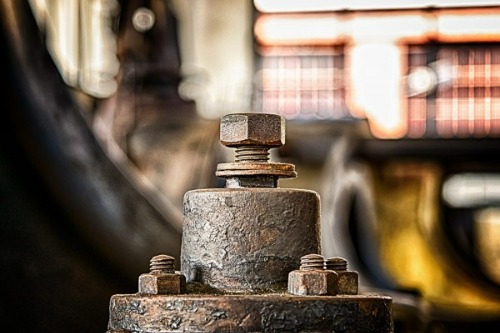HOW TO AVOID CORROSION IN METAL PARTS

In any given industry, people want their equipment to last as long as possible. Whether that be performing preventative maintenance, or making sure that every device is working under the proper conditions, workers are always doing what they can to prolong the lifespan of machinery. One of the many reasons why equipment fails prematurely is caused by corrosion. Corrosion is the process of metal degrading in the presence of oxidizing elements. One common example of this is the process of rusting, which occurs when iron oxides are exposed to moisture.
While this process is naturally occurring, it can have many negative effects on metal. Corrosion hinders the functionality of metal parts and can even cause structures or machinery to become unsafe. Although all metal is subject to corrosion, there are preventative measures you can take to slow down the process. Here’s how:
Keep metal clean and dry when possible
Water is the enemy when it comes to corrosion. Metal devices that are left outdoors, like cars, tanks and gates, are naturally exposed to rain and snow. Dirt and debris also hold onto moisture and can get stuck to equipment, which eventually leads to corrosion. While you can’t stop the rain from falling, you can keep equipment clean and out of the rain when possible to avoid excess contact with wet environments.
It’s important to keep humidity levels low for equipment that is used or stored indoors. Invest in dehumidifiers to keep the area as dry as possible. This will slow down the corrosion process and lengthen the lifespan of equipment.
Design metal equipment appropriately
Corrosion prevention starts during the design phase. Engineers must be aware of the environment that metal machinery will be exposed to and plan accordingly. For example, equipment that will be exposed to outdoor weather should have the ability to let water drain properly, rather than allow water to collect on the surface. Designers should also eliminate narrow gaps and crevices to avoid moisture or air becoming trapped and left stagnant. It’s important to clearly note where the metal device will live and function before the design process even begins to assure preventative measures are being incorporated at the start.
Apply protective coatings
Applying specific coatings to metal equipment is a cost-effective way to prevent corrosion. Coatings act as barriers that prevent the transfer of electrochemical charge from corrosive elements to the metal underneath. One common coating method is galvanization, which is a thin layer of zinc used to coat and protect.
Powder coatings are also an effective method. Dry powder is applied to a clean, dry metal surface. The metal is then heated and powder is fused to the metal device, creating a protective, coated layer. This acts as a seal to prevent direct contact of metal and the outside environment.
Always perform preventative maintenance
Over time, coatings and other preventative measures will wear down and become less effective. One of the best ways to prevent corrosion is to stay on top of maintenance and routinely check equipment to ensure everything is working efficiently. Be aware of any small damage that occurs naturally over time, like scratches or nicks in the equipment, as those can be the perfect place for corrosion to occur. Always do your best to keep parts clean and protected to minimize the risk of corrosion in the future.
Want to learn more about corrosion?
Give us a call at 1.800.333.7519 or contact us online to speak with an ACI representative today.

